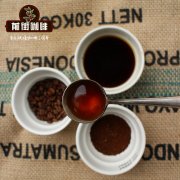What varieties of coffee in Sidamo region of Ethiopia? Sidamo coffee beans have diversified characteristics.

Professional coffee knowledge exchange more coffee bean information please follow the coffee workshop (Wechat official account cafe_style)
Front Street-introduction to Sidamo Coffee
Sidamo Sidamo, also known as Sidama Sidama, is the highest coffee-producing region in Ethiopia and was an independent province before the promulgation of the new constitution in 1995. Today, the area is divided into three administrative regions of the Southern National Autonomous Prefecture, SNNPR, Somali of Somalia and Oromia of Euromia. The micro-producing areas of Gucci Guji and Yega Snow Coffee Yirgacheffe are also located in Sidamo, but are sold under their own names.
Sidamo is a large area in southern Ethiopia and is home to farmers in Sidamo. Sidama Coffee Farmers Cooperative Union, the Coffee Farmers' Cooperative Union in Sidamo, is just a farmers' union, which still makes a living by growing, harvesting and selling coffee. There are more than 80,000 independent farmers in this alliance alone. Fairtrade, USDA organic products and other certifications are readily available for Sidamo Coffee.
Coffee production in this area is closely related to their culture. The methods of growing, harvesting and processing coffee are handed down from generation to generation. The coffee culture of Sidamo is profound and has a long history. This makes Sidamo coffee more fascinating than Brazilian coffee.
Almost the entire Sidamo region is strictly high-altitude, and coffee grows at an altitude of 1600 to 1900 meters, which means that coffee here grows longer than average before it is ripe for picking.
Different soil types, microclimates and countless native coffee species, towering mountains, highlands, plateaus, valleys and plains, diverse topography, and the geology of the area belongs to nutrient-rich, well-drained volcanic soil. the depth of the soil is nearly two meters, and the surface soil is dark brown or brown.
The biggest advantage of the area is that the soil fertility is maintained through the circulation of organic matter, using the withered leaves of the surrounding trees or the residual roots of the plants as fertilizer. Therefore, the coffee produced in cities and towns has obvious differences and characteristics. In 2010, Murray 2012, it continuously obtained the high score of CR92--94, the authoritative coffee evaluation website in the United States. Thus it can be seen that the raw beans in this area are extraordinary.
The climate in this area is humid and tropical. Unfortunately, the climate in West Dharma is slowly changing because of climate change and global warming. The extent and speed of climate change can only be estimated, but it will undoubtedly have an impact on the growth and taste of coffee here. We can only hope that this will be a positive impact.
Knowledge: good quality coffee fruit generally has a good shading effect, shade can block the hot sun at noon, reduce the metabolic rate of coffee, and contribute to the development of nutrients, fruit acids and aromatic substances.
In short: Qianjie is a coffee research hall, happy to share the knowledge about coffee with you, we share unreservedly just to make more friends fall in love with coffee, and there will be three low-discount coffee activities every month. The reason is that Qianjie wants to make more friends drink the best coffee at the lowest price, which has been Qianjie's tenet for 6 years!
END
Important Notice :
前街咖啡 FrontStreet Coffee has moved to new addredd:
FrontStreet Coffee Address: 315,Donghua East Road,GuangZhou
Tel:020 38364473
- Prev

How to grow coffee beans out of the harsh conditions where China is suitable for growing coffee only Yunnan
Professional coffee knowledge exchange More coffee bean information Please pay attention to coffee workshop (Weixin Official Accounts cafe_style) Qianjie-coffee planting introduction After removing the exocarp and pulp of coffee fruit, plant the seeds with endocarp in the nursery. After 1 or 2 months, the seeds will germinate slowly, grow main roots and support seedlings. After about 9 months, they will grow into a small tree with 12-16 leaves and about 50cm.
- Next

Variety characteristics of Sidamo Coffee beans description of flavor and taste of coffee beans in Guji producing area
Professional coffee knowledge exchange more coffee bean information please follow the coffee workshop (Wechat official account cafe_style) front street-Sidamo, Gucci Coffee introduction in Ethiopia, washing and sun treatment are very common. In the sun treatment, farmers put coffee cherries on the drying bed and then dry them in the sun for 14-42 days. Once the coffee beans are dry, remove them from
Related
- Beginners will see the "Coffee pull flower" guide!
- What is the difference between ice blog purified milk and ordinary milk coffee?
- Why is the Philippines the largest producer of crops in Liberia?
- For coffee extraction, should the fine powder be retained?
- How does extracted espresso fill pressed powder? How much strength does it take to press the powder?
- How to make jasmine cold extract coffee? Is the jasmine + latte good?
- Will this little toy really make the coffee taste better? How does Lily Drip affect coffee extraction?
- Will the action of slapping the filter cup also affect coffee extraction?
- What's the difference between powder-to-water ratio and powder-to-liquid ratio?
- What is the Ethiopian local species? What does it have to do with Heirloom native species?

